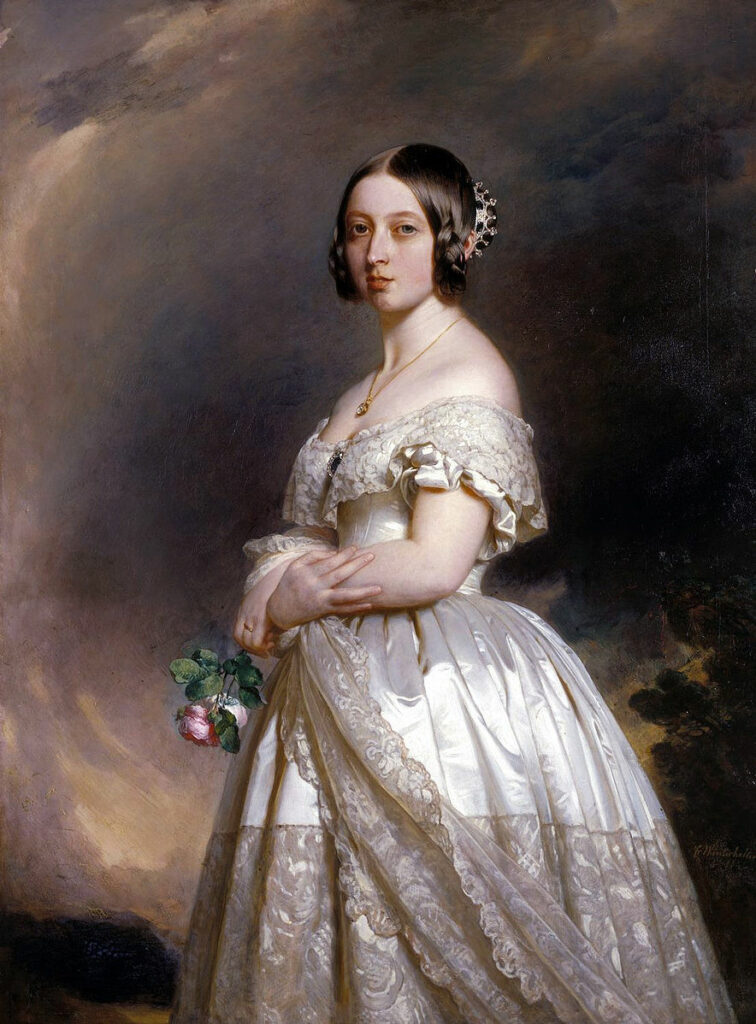This blog is part of series linked to our exhibition, More than Pretty, which looks at body decoration of girls throughout history. Check out the exhibition here.
The Victorians are synonymous with makeup. The serious unsmiling photos don’t seem to show girls wearing makeup. But our modern concept of cleanliness came from the Victorians and many of the brands we use today first started production during this time. The Victorians were obsessed with health fads and related products, so bathing was an important part of daily life. Upper class families would have had plumbed bathrooms but lower class families would have had wooden or metal tubs that sat in the kitchen close to where the water was boiled. A proper bath would have happened once a week but girls would have bathed daily with a basin and pitcher in their bedroom. Washing your hands and face daily was considered to be clean. Hair was washed weekly or monthly, depending on how oily your hair was. Hair was the centre of attention for Victorian girls and it was rarely, if ever, cut. Shampoo hadn’t been invented yet so most girls used soap, lye or an egg to clean their hair. Hairstyles could be quite elaborate since hair was so long, using braids and buns to gather it all around the head. The curling tongs that were popular during the Regency went out of fashion from the 1830s to the 1890s, when loose curls came back in fashion. Girls could use instructions written in articles to style their hair in easier ways. Everyone had access to these published articles so all classes of girls were expected to arrange their hair in the fashion of the day.
Any makeup worn would be very natural looking. Showcasing natural skin colour was very fashionable. Skincare was preferred over makeup, with most of the ingredients in skincare coming from the kitchen and garden. Creams and waters were made from almond oil, elderflower, lemons, lilies, oatmeal, roses, and violets with sugar being made into a scrub to be used as an exfoliator. Creams were more expensive, so waters were preferred by girls who didn’t have much disposable wealth. Your place in society heavily influenced what you did or did not wear. Upper and middle classes would wear a face powder, made from zinc oxide or lightly coloured starch. A light pink powder would be applied over this like a blusher. These powders were inexpensive to make and colour, using vegetable dyes to colour them. Queen Victoria preferred to pinch her cheeks instead of using powder, a trend taken up by many girls and young women. Eyebrows and eyelashes would be darkened and shaped. Burnt clove paste, charcoal, Indian ink and elderberry juice was used to darken lashes and brows. Eyeshadow was a big no no! Instead a light cover of castor oil or Vaseline was used to make the eye the focus on light hitting the face. The only colour added to your face would be on your lips. The same vegetable dyes used in other skincare were used with cocoa butter or animal fat to make lip tints. The lip tint would finish off your look. Now you were ready to leave the house and go into town!
I hope you have enjoyed your journey through the body decoration of girls throughout history. Don’t forget to check out the exhibition.
-Monique Brough
Curator
Girl Museum Inc.
For more information, check out
http://hellogiggles.com/make-up-a-history-the-victorian-era-gibson-girl-style/
https://dustyoldthing.com/victorian-era-hygiene/
https://vintagedancer.com/victorian/victorian-makeup-beauty-guide/

